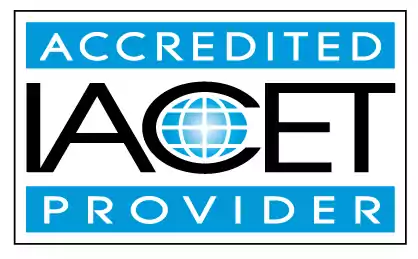Describe the stages of grief and the different ways children react to grief and stress.
Learn about the stages of grief and how children cope with grief and stress in this comprehensive guide. Understand the difference between unintentional and nonfatal injuries that children may encounter. Gain valuable insights for early childhood education and child care centers.Trainings incorporating this outcome
120 hours courses
45 hours courses
30 hours courses
6 hours courses
5 hours courses
2 hours courses
Related Outcomes
- Describe the difference between unintentional injuries and nonfatal injuries children can experience.
- Describe ways to interact with parents that will create a positive experience for both the parents and their children.
- Recognize that children develop independence at different stages.
- Give examples of strategies caregivers can teach young children to cope with grief in healthy ways.
- Define active play in the early childhood classroom and describe its benefits for young children.
- Identify ways to support children’s development using the arts.
- Describe the importance of providing opportunities for children to practice independence.
- Describe the rights of children and families and their relation to home visiting.
- Describe ways to analyze classrooms for an anti-bias approach.
- Describe the importance of responding sensitively to differences in individual communication styles.
- Give examples of ways to collaborate with other professionals involved in the care and education of all children and youth.
- Identify different types of barriers for mixed ages with disabilities and ways to adapt curriculum to fit their needs.
- Identify different learning styles of young children
- Demonstrate an understanding of the cognitive and language stages of development in children five to twelve years of age
- Teachers will identify different ways to communicate with families
- Describe strategies and experiences to promote collaboration between child and youth care professionals and programs and other professionals involved in the care and education of all children and youth.
- Describe how materials, equipment, environment, and staff meet the individual needs for children
- Describe ways to communicate effectively with others.
- Describe ways that coaches and mentors can observe and assess coachees and mentees.
- Identify the stages of second language development in young children and how to partner with families.
Related Articles
- Funny anecdotes and advice for helping children navigate holiday stress and overstimulation
- 5 Ways to Make Back to School Fun for Children
- Active Supervision: The Only Way to Care for Children
- Jingle All the Way to Emotional Regulation: Teaching Kids to Manage Holiday Stress
- Bursting the Ego Bubble: Creative ways of Developing Healthy Ego in Children
- Why Children's Books Are Important for Children’s Learning
- The“Puzzle Pieces” of Sleep Stages in Children and How they Fit Together
- Fostering Resilience in Children: A Key Role for Child Care Providers
- Crayons, Chopsticks, and Cheerios: Surprising Ways to Boost Fine Motor Skills in Kids
- Mirror Mirror on the Wall: Whimsical Ways to Prevent Bullying Tendencies in Kids, Inspired by Fairy Tales
- How Early Childhood Education Serves as a Pivotal Stage in a Child's Development
- The Secret Life of Crayons: What Children’s Coloring Choices Reveal About Their Developing Personality
- Making a Difference as a Volunteer
- Balancing Routine and Flexibility: Creating a Structured Yet Adaptable Schedule for Children
- Nurturing Kindness: Fostering Prosocial Behavior in Young Children
- Promoting Positive Behavior in Young Children
- Laugh, Learn, and Lift Spirits: Stress-Busting Tips for Early Childhood Educators
- Trauma-Informed Sleigh Rides: Supporting Children Through Play
- Is Trauma the Same for All Children?
- How to Support Children with Challenging Behaviors
 12 CEUs
12 CEUs